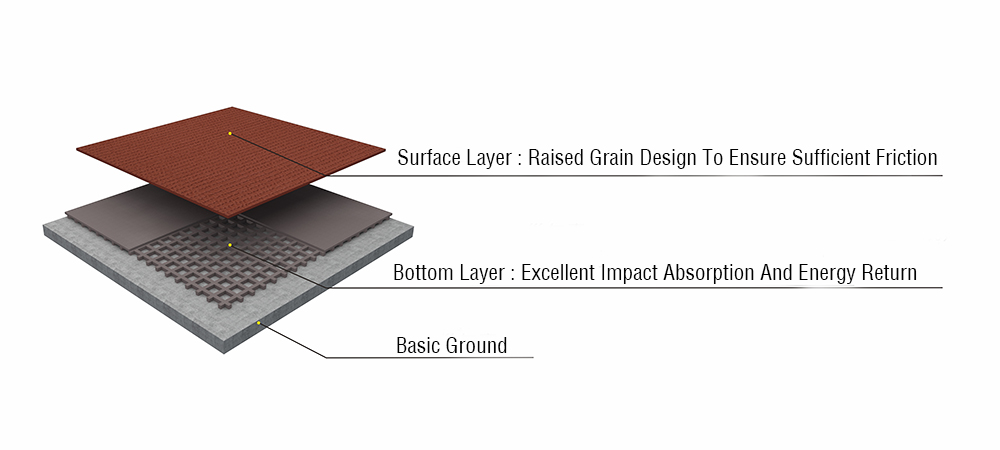ડીસેમ્બર . 04, 2024 16:40 Back to list
types of basketball floors
Types of Basketball Floors
Basketball is a sport that has captivated millions around the globe, and the surfaces on which it is played significantly influence the game. The choice of basketball floor can affect players' performance, safety, and overall enjoyment. In this article, we will explore the various types of basketball floors, each with its unique characteristics, advantages, and disadvantages.
1. Hardwood Floors
Hardwood floors are often considered the gold standard for basketball courts, especially in professional and collegiate settings. Made from solid hardwood, typically maple, these floors are prized for their durability and ability to provide excellent traction. The smooth surface of hardwood minimizes the risk of injury, allowing players to perform their best without worrying about slipping. Furthermore, hardwood courts can be polished to maintain their gloss and appearance, offering an aesthetically pleasing environment.
However, hardwood floors come with a significant drawback they are expensive to install and maintain. They require regular upkeep to avoid warping and damage from moisture, which can be a challenge in humid environments. Nevertheless, for serious basketball players and institutions, the benefits often outweigh the costs.
Often found in schools and recreational centers, gymnasium floors are usually constructed from a combination of materials, including synthetic materials and hardwood. These floors provide a good balance between cost-effectiveness and performance. They are typically less expensive than pure hardwood and can still offer decent traction and shock absorption.
Gymnasium floors are versatile and multi-purpose, allowing for various activities beyond basketball, such as volleyball and indoor soccer. However, the quality can vary significantly based on the materials used, and some may not provide the same level of performance as hardwood.
3. Synthetic Floors
Synthetic basketball floors, typically made from materials like PVC or rubber, have gained traction due to their affordability and ease of installation. These floors are often used in community centers, outdoor courts, and recreational facilities. They offer good shock absorption and are generally easier to maintain compared to hardwood.
types of basketball floors

One of the advantages of synthetic floors is their resistance to moisture and weather conditions, making them an excellent choice for outdoor courts. However, they may not provide the same level of grip and feel as hardwood, and serious athletes may find the experience less satisfying.
4. Outdoor Courts
Outdoor basketball courts can be made from various materials, including asphalt, concrete, or specialized outdoor synthetic surfaces. These materials are designed to withstand outdoor conditions and offer durability against the elements.
Concrete courts are common for public parks and recreational areas. They are rugged and can handle heavy use, but they often lack the shock absorption features found in synthetic or hardwood surfaces, which can lead to a higher risk of injury.
Specialized outdoor surfaces, often made of rubber or polymer blends, are also an option. These offer improved grip and cushioning, making them a better choice for serious players who wish to practice outdoors. However, these surfaces can still be affected by weather, leading to changes in playability.
5. Modular Floors
Modular basketball floors consist of interlocking tiles that can be assembled and disassembled easily, making them a popular choice for temporary venues or events. These surfaces are typically made from high-quality polyvinyl materials that provide good traction and support.
Although they can be more cost-effective and versatile, modular floors may not match the premium feel and performance of hardwood surfaces. Players accustomed to hardwood may need time to adjust when playing on modular tiles.
Conclusion
The type of basketball floor can have a considerable impact on the game and the players' experience. From traditional hardwood courts that provide a premium playing experience to cost-effective synthetic surfaces for recreational use, each type has its distinct advantages and challenges. Ultimately, the best choice depends on factors such as budget, intended use, and player preferences. As basketball continues to grow in popularity, the evolution of basketball flooring options will likely adapt to meet the needs of players and institutions alike.
-
Pickleball Court for Sale - Premium Flooring Solutions for Sports Venues
NewsJun.10,2025
-
Maple Grove Outdoor Pickleball Courts - Premium Conversion & Durable Materials
NewsJun.10,2025
-
Best Pickleball Outdoor Courts Solutions Convert Tennis Courts, Outdoor Covered Courts, Maple Grove Options
NewsJun.10,2025
-
Convert Tennis Court to Pickleball Fast & Affordable
NewsJun.09,2025
-
Indoor Outdoor Pickleballs Durable & All-Weather for Any Court Play
NewsJun.09,2025
-
Cost to Build Indoor Pickleball Court Costs & Savings Guide
NewsJun.09,2025

